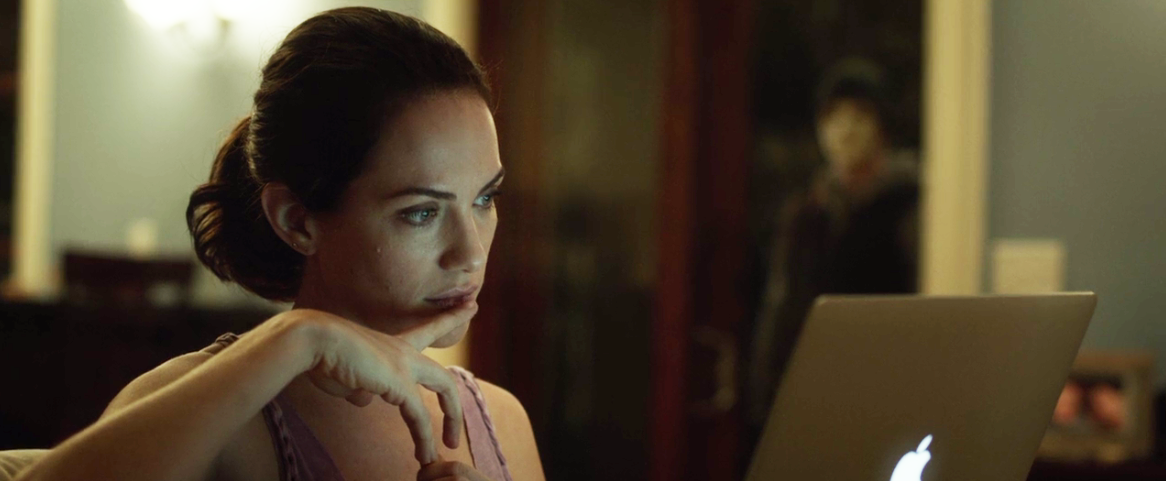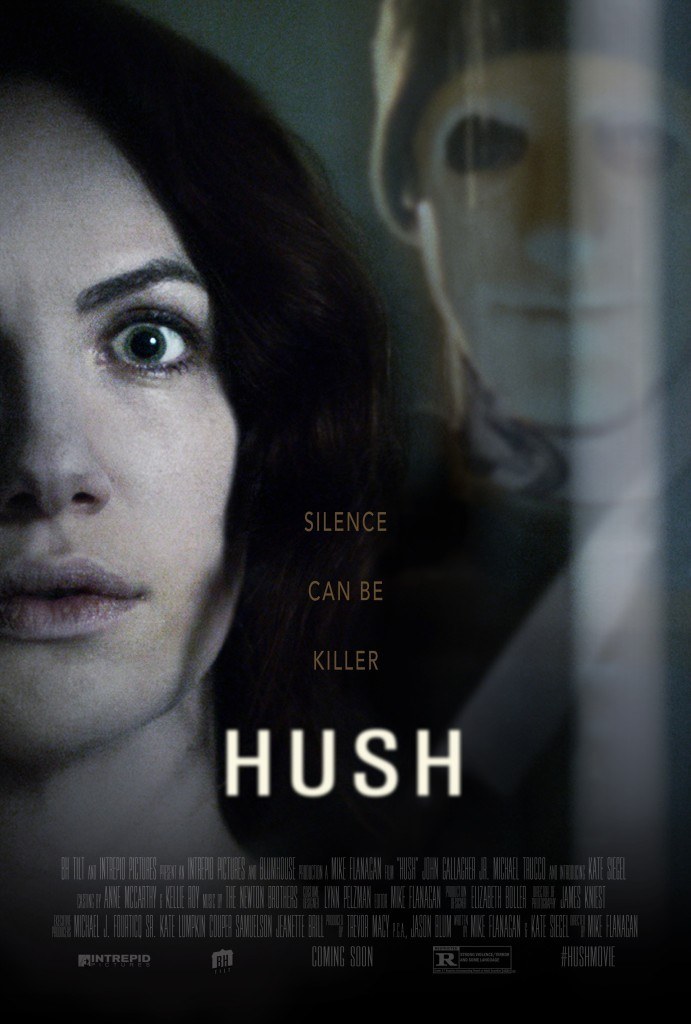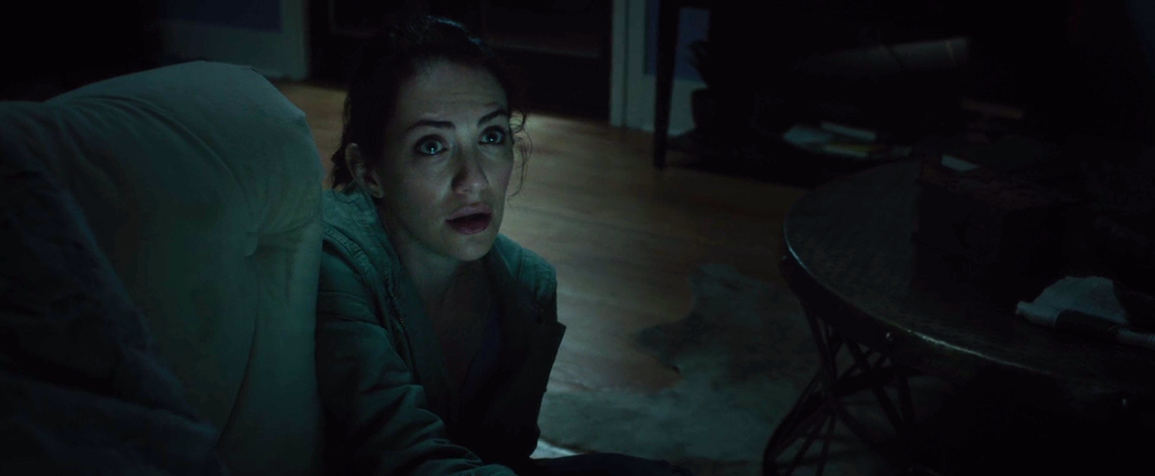
For viewers who associate horror films with panicked screams, Hush may be a breath of fresh air. Throughout the movie, final girl Maddie (Kate Siegel), a writer who is deaf, is terrorized by a crazed attacker (John Gallagher Jr.) while remaining almost entirely silent: She’s a scream queen who can’t speak, let alone scream.
Hush, which is now streaming on Netflix, was conceived by Oculus director Mike Flanagan and Siegel out of their love for the 1967 film Wait Until Dark (in which Audrey Hepburn plays a blind woman evading a killer) and the Buffy the Vampire Slayer episode “Hush” (in which the Scooby Gang lose their voices, stolen by the demonic Gentlemen). But Maddie’s deafness isn’t merely a source of dramatic tension — it’s also Flanagan’s response to what he sees as horror films’ overreliance on noise as a crutch.

“Horror itself is becoming mistaken for loud sounds,” Flanagan told BuzzFeed News in an interview at Austin’s Intercontinental Hotel during this year’s South by Southwest Film Festival. “The more I can work against that, just career-wise — I will always want to.”
While Hush may work as a protest against the state of horror, Flanagan was initially concerned with the smaller-scale question of what a deaf hero meant for the audience. Part of the terror in Hush is that the audience will always have a much clearer idea of what’s happening than Maddie does. For example, when the killer makes his first appearance at Maddie’s secluded home in the woods, he murders a neighbor on Maddie’s doorstep, but Maddie doesn’t hear the commotion and turn to see the source.
“The suspense that’s inherent in us being aware of danger that Maddie’s in when she’s not [aware] was one of the earliest and easiest expressions of why that was such a cool shade to put on the movie,” Flanagan said. “Ultimately why [deafness] works better for me than blindness or something like that is that it forces us to lean completely on the camera.”

As they co-wrote the script, Flanagan and Siegel had to decide early how much sound to include. While Flanagan was tempted to make the film completely silent, allowing the story to be told entirely from Maddie’s perspective, he was dissuaded by the practical issues involved, namely the inability to screen the film in actual silence. “You’re not hearing silence. You’re hearing popcorn and you’re hearing coughing and you’re hearing somebody’s phone vibrate,” he explained.
Instead, Hush allows occasional moments in which the sound drops out and viewers are afforded a glimpse into Maddie’s world. On the whole, it’s still a much quieter experience than almost any other recent horror film. Because it’s largely composed of scene directions with little dialogue, the script came in at only 50 pages. (In standard screenplays, a page is equivalent to about a minute of screen time.)
As Hush relies so heavily on action over words, Flanagan and Siegel wrote the the screenplay to be incredibly specific in terms of movement. With a standard script, Flanagan said that one could simply jot in basic blocking and refine it on set, but for Hush, they carefully plotted out and choreographed every movement.
“Kate and I would actually act things out through the house, and that’s kind of how we wrote it,” Flanagan said. It helped that he and Siegel, who are married, share a home. “I would try to look around our house and be like, how could I get in if I want to? How can I scare her if I want to? And she would look around the house like, what can I use to defend myself? How long will it be effective?”

The “role-play,” as Flanagan called it, helped add realism to the film’s tense cat-and-mouse game between Maddie and her pursuer. Once the creative team had secured their location — an isolated house in Alabama — Flanagan ran through similar role-playing scenarios with cinematographer James Kniest and producer Trevor Macy to fine-tune what he and Siegel had worked out.
Hush is a far more contained movie than Flanagan’s last film, 2013’s Oculus: As in Oculus, the action is almost entirely restricted to one home, but Hush offers sparse dialogue and none of Oculus’s complex exposition. He called Hush’s minimalist nature “a blessing and a curse” given the film’s low budget and accelerated shooting schedule.
“We only had 18 days, so the claustrophobia of the location from a practical point of view allowed us to actually make the movie within that time,” he said. “The problem is, a viewer gets familiar with that space in about five minutes, and you can’t cover a scene the way that you might want to instinctively when you first approach it in a vacuum. There needs to be variation in the aesthetic visually, or people will get bored.”
Keeping his audience engaged was, naturally, a major goal for Flanagan, but he eschewed what he considers to be cheap tricks. He cited the overdone trope of a leading lady shutting a door to reveal the nerve-rattling surprise of someone standing behind it. Jump scares — those moments of an attacker coming up behind you and shouting “boo!” — are, more often than not, announced with loud, jarring noises, the very thing that Hush’s persistent silence rebels against. “I don’t even like to call them jump scares. They drive me nuts, because I think it’s just startling,” he said. “There’s no artistry in walking up behind somebody and smashing a cymbal behind their head and making them flinch.”
At the same time, Flanagan realizes that audiences have come to expect these moments from genre films. He noted that even horror fans who claim to want “something new” will often reject films they perceive to be “not scary” because they don’t make them jump. And studios, who monitor this kind of response, continue to view jump scares as essential to a current horror film’s success.
“If a studio sees a cut of a movie that doesn’t have five jump scares by this point of the movie, they’re like, ‘It’s not going to work,’” he said. “Startling people is easy. … You can do it so artlessly that now it’s like, OK, we can put a movie out there that startles people 15 times in 90 minutes and call it a successful horror movie.”

That’s why the suspense in Hush is grounded in a more restrained perception of scares: It builds throughout the film toward a climax rather than getting diffused in jump scares throughout. Flanagan knows his approach doesn’t work for everyone: Oculus, he admitted, was polarizing for rejecting contemporary mainstream horror norms. But he’s not willing to give in to what he sees as laziness, even if Hush is criticized for its scarcity of jolts. (His next film, Ouija 2, is a studio movie and not an indie like Hush, though he’s confident he’ll be able to maintain his stylistic preferences.)
But while Flanagan is delighted when critics recognize the subtler scares of certain horror films, he’s admittedly disappointed by audience gripes over movies that “just aren’t scary,” and box office numbers that reflect that lack of engagement.
“For every kind of interesting or moody or atmospheric horror movie like It Follows or The Witch that comes out, there’s gonna be 10 more that are just jump-scare delivery machines, and those are all gonna outgross the others,” Flanagan said. “[Movies like It Follows] perform better than a studio would have expected, but they’re still not gonna do the numbers that Annabelle did. And that can be disheartening.”
For the time being, however, Flanagan is focused less on the economics of horror and more on what he can do as a filmmaker to preserve the kind of movies he actually wants to watch. Hush may not cause anyone to jump off their couch, but its simmering, largely silent suspense is something Flanagan is proud to showcase.
“It goes back to when you’re a kid,” he said. “When you’re sitting up in your bed at night and you’re scared of something in your room, you’re not afraid that something’s about to pop out at you — you’re afraid that something’s waiting. And that’s where the fear is.”
CORRECTION
The 1967 Audrey Hepburn film is Wait Until Dark. It was previously mistitled.
